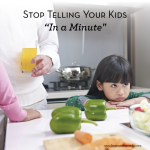Whining: Why it happens and how to stop it
 Query moms and dads about their biggest parenting challenges, and it won’t be too long before someone mentions whining. It’s a behavior that crosses a range of ages, from toddlers to teens. And, unfortunately, the longer it goes unchecked, the worse it gets. Shannon Hinde, a single mom of four, including a 4 and 6 year old, said whining frustrates her on many levels. Not only do her children have a knack for whining at the most inopportune times – think holiday dinner with relatives or what was supposed to be a festive outing – but finding the patience and creativity to respond constructively is sometimes a challenge.
Query moms and dads about their biggest parenting challenges, and it won’t be too long before someone mentions whining. It’s a behavior that crosses a range of ages, from toddlers to teens. And, unfortunately, the longer it goes unchecked, the worse it gets. Shannon Hinde, a single mom of four, including a 4 and 6 year old, said whining frustrates her on many levels. Not only do her children have a knack for whining at the most inopportune times – think holiday dinner with relatives or what was supposed to be a festive outing – but finding the patience and creativity to respond constructively is sometimes a challenge.
“Usually I try to separate them if at all possible,” Hinde says.
The good news for Hinde and the millions of other parents worn out by whining is that it can be minimized and even stopped.
As with any behavior, it helps to understand why it happens so you are better equipped to respond when it does. Identifying triggers can also help parents intercept the behavior before it occurs.
Why do children whine?
Tone of voice is a communication tool we learn to use as soon as we can speak. We cajole, we plead, we warn, we flatter. Truth be told, we probably even whine on occasion. Children absorb this skill by watching and mimicking. By the time they are toddlers, kids discovered how effective tone of voice can be: the screech that beckons a parent, crying that results in attention, the temper tantrum that earns a second cookie.
Another skill children must master but that comes less easily is self control. Even teens have meltdown moments when emotion gets the better of them and they default to bellyaching. Whining can be a sign that kids are hungry, tired, frustrated or bored, and simply lack the skills to otherwise communicate their needs and feelings.
Another reason children whine is that it has become a habit. Any response, either negative or positive, can reinforce behavior, so parents need to be aware of how their own actions are influencing the pattern.
How to stop the whining
Following are a handful of suggestions culled from personal experience and several other parents. Keep in mind that you are trying to shape – or change – a behavior, which won’t happen overnight.
– Sit down with your partner and develop a strategy for responding to whining. A united front offers consistency, and planning ahead better prepares you to respond when the whining occurs.
– Don’t ignore the whining, but don’t respond to it. Kids whine because they don’t know what else to do, so ignoring it is an invitation to ramp up the griping and complaining. Statements such as “I cannot understand what you want when you whine” or “Please tell me what you want using a polite tone of voice” lets children know 1) whining won’t work, and 2) tells them what behavior is acceptable. It can also be helpful to acknowledge your child’s frustration: “I know the grocery store line is long, but I need you to use a nicer voice to talk to me.”
– Anticipate when whining is likely to occur and plan ahead.
– Distraction is a very effective tool when dealing with younger children. Engage them in a new activity, read a book with them or move them to a new area.
– Respond quickly, firmly and fairly. If children learn a parent means what she says the first time, they won’t continue to whine about it.
– Model how you want your children to speak to you.
– Humor is a powerful tool for dealing with a multitude of behavior challenges, including whining. My favorite? “Would you like a little cheese with that whine?”
For more tips on how to handle whining, check out one of these books:
The No-Cry Discipline Solution: Gentle Ways to Encourage Good Behavior Without Whining, Tantrums, and Tears by Elizabeth Pantley (2007, McGraw-Hill)
Whining: 3 Steps to Stop It Before the Tears and Tantrums Start by Audrey Ricker (2000, Fireside)
Mama Cat’s Adventures in Child Training Presents: No Whining by Janice C. Villnerve (2004, Paradigm)
by Maria Connor






